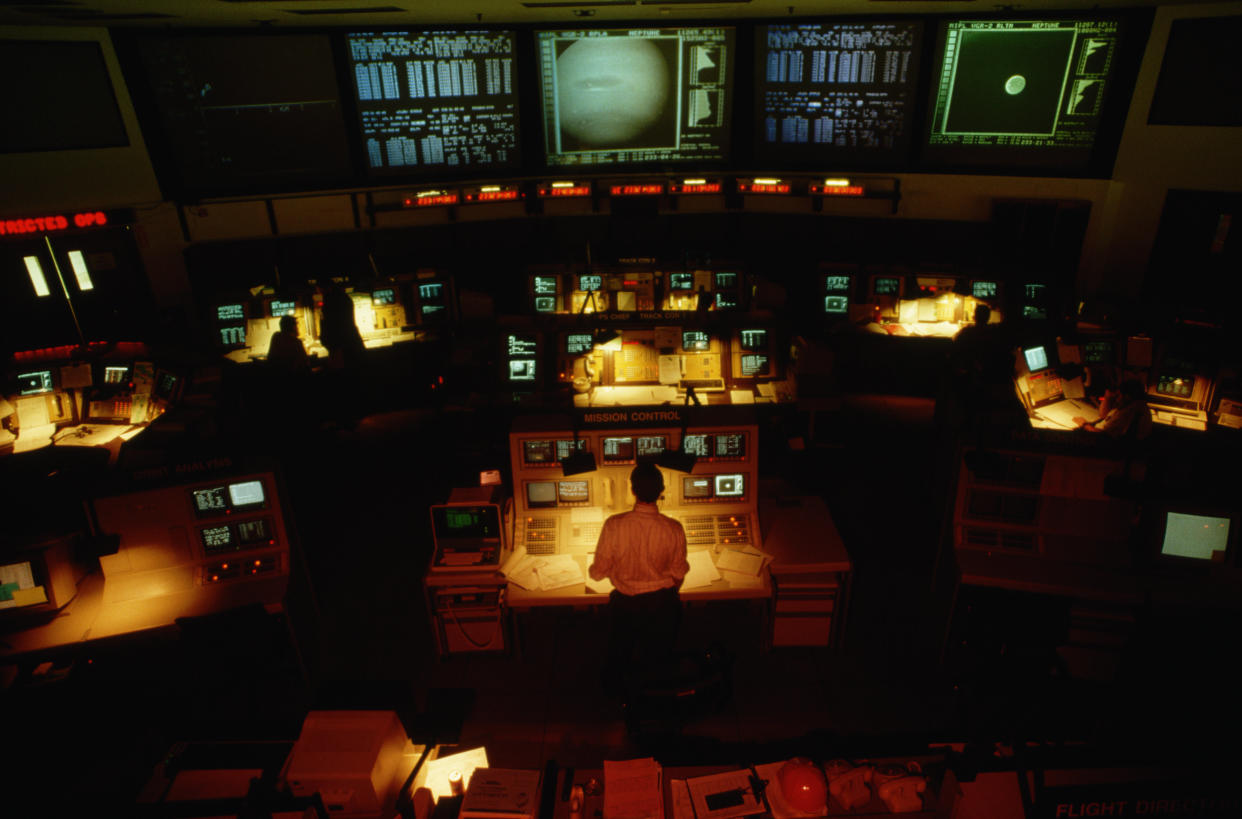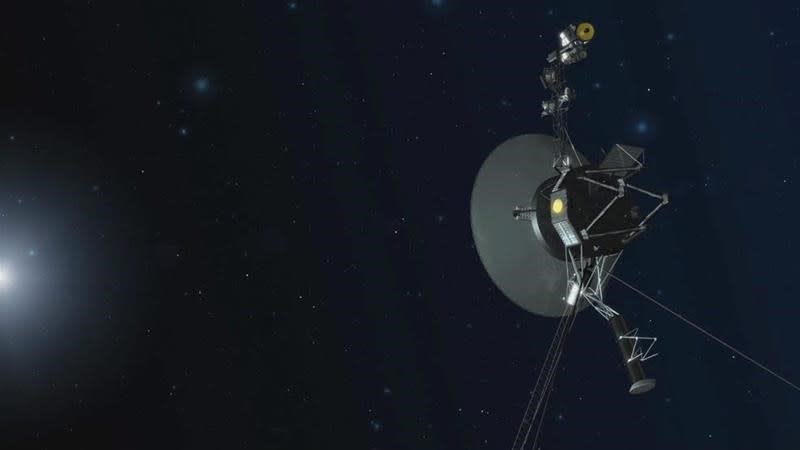We just sent a message 13 billion miles into space - and a spacecraft answered

NASA just beamed a message 13 billion miles into space, to the only man-made object outside our solar system – and got a response.
The Voyager 1 spacecraft has been flying for 40 years, and NASA’s signal told the craft to fire its back-up thrusters – which had not been used for 37 years.
They worked perfectly, allowing the spacecraft to reorient itself so it can continue communicating with Earth.
Most popular on Yahoo News UK
Police hunt thugs who ‘strangled’ teenager and ‘forced him to apologise for being gay’
Britain braced for hail, snow and rain as Arctic winds hit and temperatures fall
Britain First supporter gave Nazi salute and shouted ‘white power’ before driving at Muslim curry house owner
Airline crew say they saw North Korean missile from their plane
Shocking video shows how sleeping driver ploughed his lorry into motorway traffic
‘With these thrusters that are still functional after 37 years without use, we will be able to extend the life of the Voyager 1 spacecraft by two to three years,’ said Suzanne Dodd, project manager for Voyager at NASA’s Jet Propulsion Laboratory.
Since 2014, engineers noticed that the thrusters Voyager 1 has been using to orient the spacecraft have been degrading.

At 13 billion miles from Earth, there’s no mechanic shop nearby to get a tune-up.
NASA’s propulsion experts agreed on an unusual solution: Try giving the job of orientation to a set of thrusters that had been asleep for 37 years.
In the early days of the mission, Voyager 1 flew by Jupiter, Saturn, and important moons of each.
To accurately fly by and point the spacecraft’s instruments at a smorgasbord of targets, engineers used “trajectory correction maneuver,” or TCM, thrusters that are identical in size and functionality to the attitude control thrusters, and are located on the back side of the spacecraft.
But because Voyager 1’s last planetary encounter was Saturn, the Voyager team hadn’t needed to use the TCM thrusters since November 8, 1980.
Back then, the TCM thrusters were used in a more continuous firing mode; they had never been used in the brief bursts necessary to orient the spacecraft.
On Wednesday, Nov. 29, they learned the TCM thrusters worked perfectly.
The thruster test went so well, the team will likely do a similar test on the TCM thrusters for Voyager 2, the twin spacecraft of Voyager 1.


